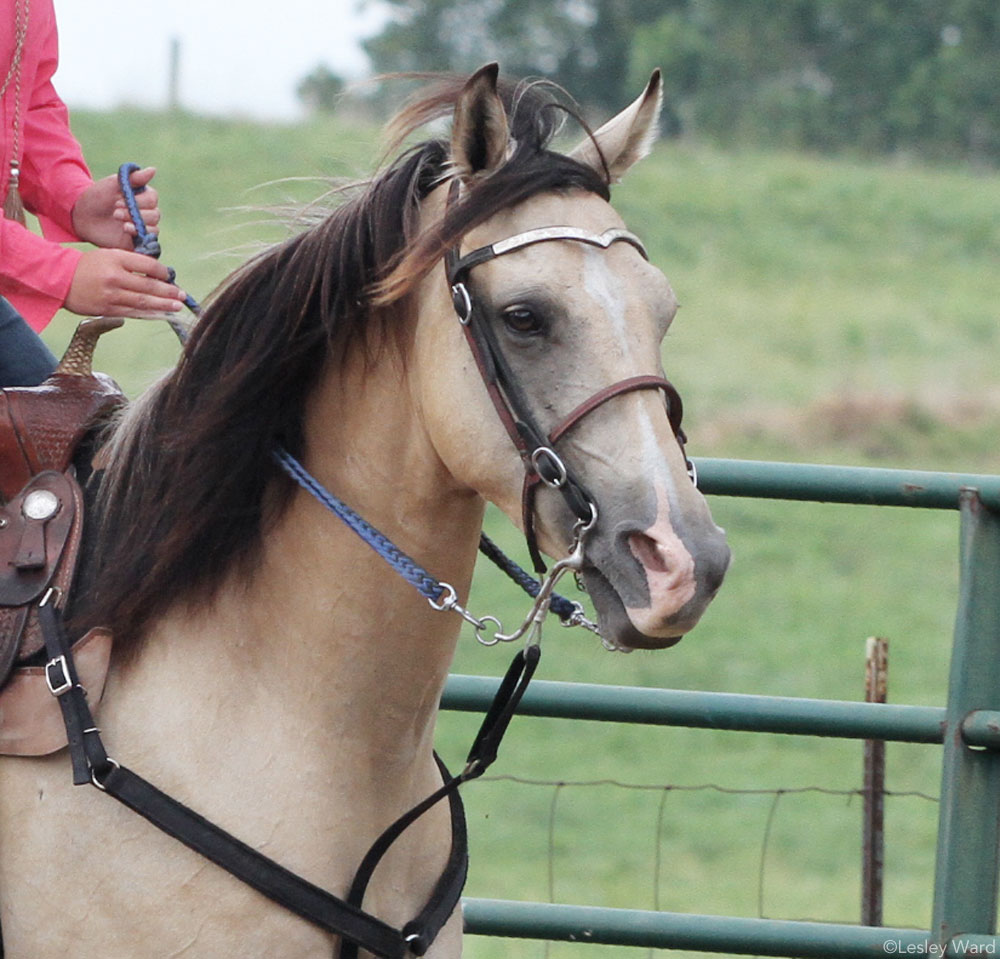Q: I was told to use a tie-down because my horse is high-headed. Is this a commonly used training correction for a green horse? Does it work?

That being said, the emphasis should be on the way your horse is using his body. Your horse’s neck works as a counterweight. He lifts his neck to compensate when his forehand is heavy; it’s pure physics. When he’s in motion and using his body correctly to maintain structural balance, he will lower his neck on his own.
A tie-down will prevent your horse from lifting his head, but it isn’t going to solve the underlying problem. If he’s already struggling with the concept of carrying a rider, limiting the movement of his head can result in physical discomfort and create emotional distress. Improving your horse’s condition and overall balance will ensure his neck carriage is in equilibrium to his body.
Begin this process with groundwork. On a longeline or in a round pen, send your horse forward at the walk. Encourage him to take long, fluid steps. If you see his neck lengthen and/or lower, discontinue the go-forward cue and praise him. After doing this exercise in each direction, move him into the extended jog. Encourage him to move at a steady pace; a consistent rhythm will help him find his balance. Once your horse is carrying his neck in a more comfortable and appropriate position on his own, continue his work under saddle.
Don’t be discouraged if he returns to his high-headed ways as soon as you climb on board. Remember you are just getting started modifying old habits. Ride two-handed in a snaffle bit. Walk your horse forward while taking a light feel of his mouth. Hold your hands in front of the saddle, slightly below his withers, and as wide as your shoulders. This position allows you to maintain contact without restriction and encourages your horse to lower his head. Follow the movement down with your hands, feeding him rein when he drops or elongates his neck. Once he’s accepting the bit contact and relaxing, move on to large circles and turns, progressing to smaller diameters as his understanding and physical condition improve. Once he’s doing well at the walk, move up to the jog and finally the lope.
Dale Rudin is a CHA-certified riding instructor and clinician with a mindful and balanced approach to horsemanship and riding.
www.un-naturalhorsemanship.com
This article originally appeared in the June 2015 issue of Horse Illustrated magazine. Click here to subscribe!






The article is complete and really correct
I love this article so hard! Well-written. Take heed, readers!